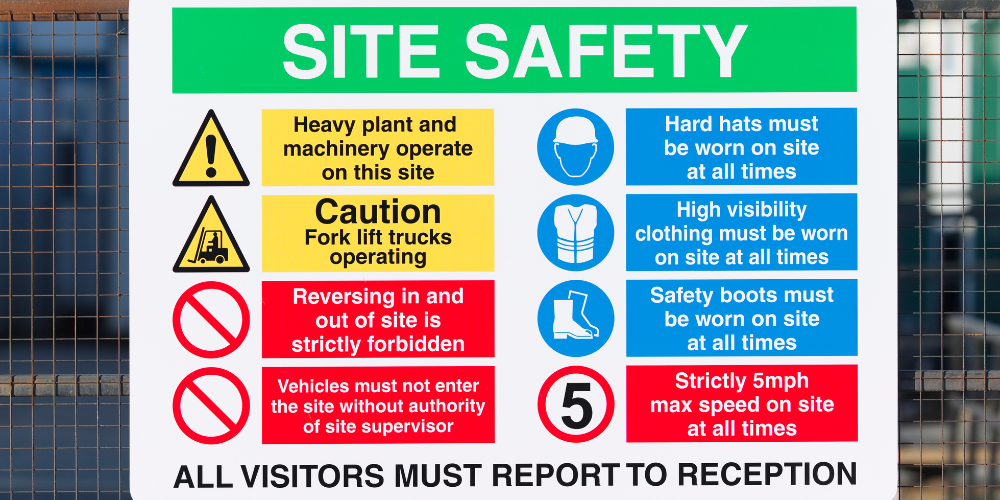Safety Incentives: What Works and What Doesn’t

In the dynamic landscape of workplace safety, companies are constantly seeking effective strategies to foster a safety culture among employees. One approach that has gained traction is using safety incentives – rewards and recognition designed to motivate and reinforce safe behaviors. However, not all not all safety incentive programs are equally effective.
“People often say that motivation doesn’t last. Well, neither does bathing – that’s why we recommend it daily.”
Zig Ziglar
The Human Element of Workplace Safety
Understanding the psychology behind motivation is crucial to assessing the effectiveness of safety incentives. Behavioral psychologists argue that positive reinforcement, through rewards or recognition, can stimulate the repetition of desired behaviors. However, the success of an incentive program hinges on its alignment with employees’ intrinsic motivations.
- Human Behavior: At the core of workplace safety, human behavior significantly impacts daily decisions affecting personal safety and colleagues. Understanding the motivations behind certain behaviors is paramount to fostering a safer workplace.
- Attitudes and Perceptions: Employees’ attitudes and perceptions toward safety play a critical role. Positive attitudes foster a prioritization of safety, while negative attitudes can lead to risky behavior.
- Group Dynamics: The dynamics within a workplace group can either promote or hinder a safety culture. Group behavior influences individual choices, and peer pressure can be a potent factor in driving or discouraging safe practices.

The Role of Social Psychology
- Social Norms: Conforming to the norms of social groups is a common human tendency. The lack of a shared safety norm within a team or organization can lead to a deficiency in safety consciousness.
- Herd Mentality: The bandwagon effect can impact safety behavior. Observing peers taking risks may influence others to follow suit.
- Perception of Risk: Individual perceptions of risk can be shaped by group discussions and prevailing sentiments within the organization.
What Works
✅ Recognition and Appreciation:
Genuine recognition for safe behaviors profoundly impacts employee morale and engagement. Publicly acknowledging individuals or teams fosters pride and reinforces the behavior’s importance.
✅ Non-Monetary Rewards:
While financial incentives can be effective, non-monetary rewards such as gift cards, extra time off, or exclusive privileges can motivate employees, contributing to a positive work environment.
✅ Feedback and Communication:
Regular, constructive feedback is a powerful tool. Providing specific feedback on safety performance helps employees understand the impact of their actions and reinforces the importance of safety protocols.
✅ Team-based Incentives:
Promoting collective responsibility through team-based incentives cultivates a culture of mutual accountability.
What Doesn’t Work
❌ Overemphasis on Extrinsic Rewards:
Relying solely on monetary incentives without addressing the underlying safety culture can lead to temporary compliance spikes but may not create lasting behavioral change.
❌ Unrealistic Goals:
Setting unattainable safety goals can demoralize employees. Establishing realistic targets challenges without overwhelming the workforce.
❌ Punitive Measures:
Punishing employees for safety violations without addressing root causes can create a culture of fear, hindering open communication about safety concerns.
❌ Lack of Consistency:
Inconsistency in applying safety incentives undermines their effectiveness. Sporadic or arbitrary rewards may raise doubts about the sincerity of the safety program.
What Organizational Research Shows
Workplace safety transcends protocols and procedures, encompassing an understanding of human behavior, attitudes, and group dynamics. Recognizing the influence of social psychology on safety culture allows organizations to improve safety outcomes proactively. However, avoiding reliance on extrinsic rewards, setting realistic goals, refraining from punitive measures, and ensuring consistency in applying incentives are essential.
Read what author and organizational psychologist Adam Grant says about workplace motivation in the Annual Review of Psychology (Grant and Shandell, 2022).
Improving Workplace Safety Culture
Here are five fundamental principles that collaboratively shape a workplace atmosphere where safety isn’t merely a priority but an inherent aspect of the organizational DNA.

- Education and Training:
Educate employees about the psychology of safety to empower them to make informed decisions.
- Leadership and Role Modeling:
Leadership sets an example by consistently prioritizing safety in behavior and decisions.
- Positive Reinforcement:
Reinforce positive safety behaviors with recognition and rewards.
- Open Communication:
Foster open communication about safety concerns without fear of reprisal.
- Peer-to-Peer Accountability:
Promote peer-to-peer accountability for safety to reinforce a safety-conscious culture.
Final thoughts
By educating employees, fostering positive attitudes, and encouraging open communication, workplaces can establish a culture where safety is a shared commitment and value. A robust safety culture benefits employees and organizations by reducing accidents, increasing productivity, and enhancing overall well-being.
Feel free to contact me or follow me on LinkedIn for more TapRooT® RCA content.




